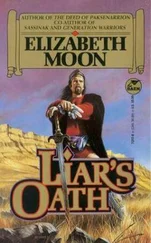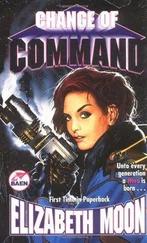Elizabeth Moon - Once a Hero
Здесь есть возможность читать онлайн «Elizabeth Moon - Once a Hero» весь текст электронной книги совершенно бесплатно (целиком полную версию без сокращений). В некоторых случаях можно слушать аудио, скачать через торрент в формате fb2 и присутствует краткое содержание. Жанр: Космическая фантастика, Боевая фантастика, на английском языке. Описание произведения, (предисловие) а так же отзывы посетителей доступны на портале библиотеки ЛибКат.
- Название:Once a Hero
- Автор:
- Жанр:
- Год:неизвестен
- ISBN:нет данных
- Рейтинг книги:3 / 5. Голосов: 1
-
Избранное:Добавить в избранное
- Отзывы:
-
Ваша оценка:
- 60
- 1
- 2
- 3
- 4
- 5
Once a Hero: краткое содержание, описание и аннотация
Предлагаем к чтению аннотацию, описание, краткое содержание или предисловие (зависит от того, что написал сам автор книги «Once a Hero»). Если вы не нашли необходимую информацию о книге — напишите в комментариях, мы постараемся отыскать её.
Once a Hero — читать онлайн бесплатно полную книгу (весь текст) целиком
Ниже представлен текст книги, разбитый по страницам. Система сохранения места последней прочитанной страницы, позволяет с удобством читать онлайн бесплатно книгу «Once a Hero», без необходимости каждый раз заново искать на чём Вы остановились. Поставьте закладку, и сможете в любой момент перейти на страницу, на которой закончили чтение.
Интервал:
Закладка:
Esmay tried to think of a tactful way to phrase it. “They . . . went overboard, sir.”
“Ah? Oh, I suppose you mean the medal?”
Of course it was already in her file; she knew that. “Yes, sir.”
“But that was the government, not your family . . . You have . . . a father, stepmother, half-brothers?”
“Yes, sir. Also aunts, uncles, cousins . . . it’s a large clan, sir.”
“Did they approve of your joining us?” The warm brown eyes sharpened.
“Not . . . entirely, sir. Not at first. Now they do.”
“We have no other officers from your planet, you see. The last was some thirty years ago.”
“Meluch Zalosi, yes, sir.” A Zalosi of the Coarchy, which no longer existed, but had been, at one time, a political force. The Zalosi, though, were servants of the Coarchs. Meluch, the gossip went, had been the illegitimate child of the Tributine Coarch and a Zalosi guard, farmed out to a distant Zalosi relative. He had proven to carry the distinctive feathery brows of the Coarch’s line—a dominant trait—and when he qualified for the Fleet entrance exams it had seemed the best solution to everyone. Meluch himself had not been asked; he was a Zalosi, to go where the Coarchy directed.
“I wondered,” Admiral Dossignal went on, breaking into her musings, “why so few? Altiplano is, I understand, an agricultural world. We usually get quite a few recruits from ag worlds.”
“It’s not the usual sort of ag world, sir.” Esmay paused, wondering how much to explain. The admiral would have ample data available if he really wanted it.
“And why is that?” he asked. Perhaps he simply wanted her analysis, rather than the raw data.
“No free-birthers,” Esmay said succinctly. All the other reasons came back to that: with population growth under control, there were no idle hands to ship offplanet. Immigrants had to agree before they were accepted; if they already had reproduced, they had to agree to pre-emptive sterilization.
“But your family—how many sibs do you have?”
“Two, sir. But they’re my father’s second wife’s, on her permits.” She did not mention what he could probably guess, that the birth limits were enforced more strictly on other families. Her father could have sired more children, but he had transferred his remaining permits to Sanni, who wanted them.
“I . . . see. And their attitude towards rejuvenation?”
She hesitated. “I . . . know only my father’s view, and my uncle’s. They expressed concern about the effect on population stability, although the competitive value of ever-increasing experience would have a positive effect.”
“Mmm. So the senior military personnel on Altiplano have not been rejuved?”
“No, sir.”
“Did you sense any resentment of the Familias on that basis?”
Esmay felt uncomfortable, but answered with the truth as she saw it. “No, sir, none. Altiplano’s an independent; the admiral is no doubt aware that we have no sponsor with a Seat in Council, and Council policy affects us only inasmuch as it affects commercial law.”
“There’s been some unrest, especially since the revelation about that mess on Patchcock,” the admiral said. “There’s now a strong political faction opposed to rejuvenation on the grounds that the rich old will exploit the poor unable to afford rejuvenation.”
“I don’t think anyone on Altiplano feels exploited by the Familias,” Esmay said. “Occasionally by each other . . .” More than occasionally, but she didn’t see how her limited knowledge of Altiplanan local politics would make the situation clear. She didn’t say the first thought that popped into her head, which was that any force trying to exploit Altiplano would have its work cut out for it.
“I’m glad to hear it,” the admiral said. “I’ll be seeing you from time to time—officers of the 14th get together regularly . . . Commander Atarin will let you know the next event.”
“Yes, sir; thank you.”
The first thing Esmay did after coming back from her interview with the admiral was pull a diagram of the various commands aboard the DSR. She had thought she understood how the chains of command ran, and who reported to whom about what . . . but several things the admiral had said left her confused.
A few hours later, she was only slightly less confused, but considerably entertained. With very few exceptions—and DSRs were the primary exception—Fleet vessels had a simple command structure, with the captain at the top, and authority descending rank by rank through the officers to the enlisted personnel. An admiral aboard a flagship had no direct authority over the ship’s crew: all orders had to flow through the regular captain.
But the size of the newer DSRs had tempted Fleet to treat them as mobile bases. Rather than maintain separate technical schools and laboratory facilities at Sector HQ, staff had decided to put them aboard the Koskiusko , which needed most of the equipment anyway. Thus the Koskiusko had multiple commands, each headed by an admiral, which were expected to use the same facilities—and even the same experts—for different purposes. If Fleet had wanted to create a venue for massive turf battles, it could have invented no better arrangement.
Esmay found the debris of such battles in the files. The Special Materials Fabrication Facility, for instance: it was supposed to serve the 14th Heavy Maintenance Yard by making all the materials needed to maintain an inventory of structural members. But it also served the Senior Technical Schools, where students learned to make such materials, and the Special Materials Research Lab, where the most inventive materials scientists struggled to develop new materials with exotic properties.
On the first deployment a massive fight developed between the 14th Heavy Maintenance, which wanted a larger inventory of the crystal-bonded structural members for repair, and the other two commands, which insisted that they needed a guaranteed minimum access to the facility to fulfill their missions.
That argument had risen through the various chains of command until the admirals involved were, as Pitak put it, “locked in a room to fight it out until only one emerged victorious.” The solution—a compromise reached with all admirals still alive and kicking vigorously—satisfied no one, but its inconvenience suggested that complaint would only make things worse.
Even the traditional division between the ship’s crew and its passengers had eroded. Though in theory Captain Hakin had the ultimate authority for the ship’s security and functioning, his crew was outnumbered many times by the personnel of the 14th Heavy Maintenance Yard. When a previous Yard commander wanted to run an “outrigger tube” between T-3 and T-4, between the lateral docking bays, he’d done so. Esmay found the furious correspondence launched by the then captain to the admiral then commanding the 14th Heavy Maintenance, and the directive from Sector HQ that the offending tube would be allowed to remain. The captain had been reassigned.
No wonder the ship’s architecture didn’t match the computer specs, and everyone needed update cubes to keep track of the changes!
Above the ship level, the chain of command looked more like a tree diagram. Captain Hakin’s superior was Admiral Gourache, commander of this wave, whose superior was the Sector 14 commandant, Admiral Foxworth. Admiral Dossignal, however, reported directly to the sector commandant; he was responsible for all maintenance functions in the sector. Admiral Livadhi was Training Command’s representative in this sector, and not under the sector commander at all: Fleet Headquarters had taken over all training functions sixty years before. Similarly, the medical command had its own separate chain, this time running back to Admiral Surgeon General Boussy, back at Rockhouse.
Читать дальшеИнтервал:
Закладка:
Похожие книги на «Once a Hero»
Представляем Вашему вниманию похожие книги на «Once a Hero» списком для выбора. Мы отобрали схожую по названию и смыслу литературу в надежде предоставить читателям больше вариантов отыскать новые, интересные, ещё непрочитанные произведения.
Обсуждение, отзывы о книге «Once a Hero» и просто собственные мнения читателей. Оставьте ваши комментарии, напишите, что Вы думаете о произведении, его смысле или главных героях. Укажите что конкретно понравилось, а что нет, и почему Вы так считаете.












